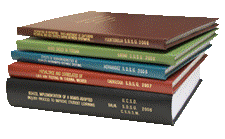Libraries, University of Nebraska-Lincoln

Archival Master’s Theses from the University of Nebraska-Lincoln
Date of this Version
8-1973
Document Type
Thesis
Citation
Thesis (M.S.)—University of Nebraska—Lincoln, 1973. Department of Agronomy.
Abstract
A study was established to evaluate some methods of boron analysis and to select a suitable procedure for both plant and soil samples. Representative soils were taken from the potentially oron deficient area and used in a greenhouse study.
The Carmine method was adapted for the determination of boron in soil and plant samples. The yields of corn and alfalfa were related to the amount of boron fertilizer applied for several soils studied. The level of boron in the whole plant was determined and was correlated with the amount of boron applied and the amount of hot water soluble boron in the soil.
The conclusions drawn from this study may be applied only to soils of similar texture and of similar climatological factors.
-
On the selected soils the soil boron level ranged from 0.19 to 0.31 ppm HWS boron.
-
The critical level of boron in the alfalfa plant is approximately 15 ppm.
-
The critical level of boron in the corn plant could not be accurately determined because existing soil boron levels seemed to be sufficient to grow and maintain corn for the short growing season used in this study. The level was estimated to be less than 10 ppm B.
-
The hot water soluble boron level in the soil needed for the normal growth of alfalfa may be as high as 0.30 ppm for certain conditions.
-
The hot water soluble boron level in the soil for the normal growth of corn seems to be less than 0.20 ppm, but the relative adequacy of boron for corn did not allow a more precise determination.
-
The hot water soluble level of boron in the soil is directly influenced by the amount of boron applied.
-
The texture of the soil affected the proportion of applied boron extractable by the hot water extraction procedure. When equal amounts of boron were applied, sand had a greater amount of measurable boron than loam.
-
The organic matter content of the soil influences the amount of hot water soluble boron.
-
Alfalfa removed more boron than corn, indicating a boron deficiency is likely to occur with alfalfa rather than corn.
-
The levels of hot water soluble boron before and after cropping with two crops of alfalfa did not change greatly, indicating substantial release from chemical form of boron (mineral or organic) not extractable by hot water.
Advisor: Robert C. Sorensen


Comments
Copyright 1973, the author. Used by permission.